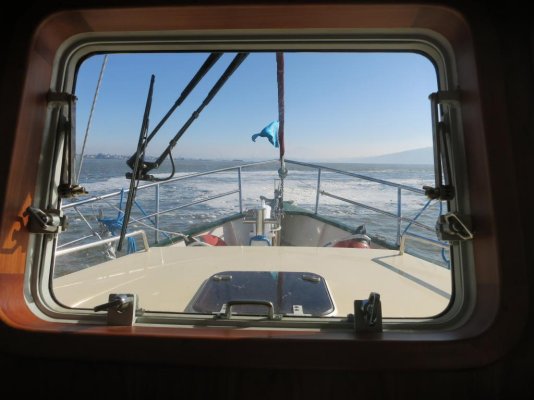As I look through the "For sale" listings I see a number of very nice looking boats that are around 40 years old powered by almost 40 year old engines.
Now those engines have to be reaching the end of their service life with parts being hard to come by and marine mechanics charging B.O.A.T. prices. Two new or even rebuilt big engines look like they could easily run into 6 figures by the time the dust settles.
Now I have no desire to head off into the sunset at 15 to 30 knots so I wonder "Could one repower with much smaller engines?".
All the charts I look at suggest that those boats might move quite happily with roughly 1/6 of their original power. So if they had 2 x 240hp diesels originally then 2 x 40 should be quite OK?
Never going to plane but should get close to hull speed.
And a boat that was built to manage 500 hp should be good enough to manage 80 hp, even after 40 years.
Now I've already repowered one yacht quite successfully so I know it's not that big a job. New engine bearers can be fabricated. Propellers can be cut down and repitched and even new smaller ones are not going to be that costly. Exhaust systems were never blindingly expensive.
Could even get a few dollars selling the old engines.
Might need to add another half ton or so of ballast though.
So has anyone ever done this or seen a boat on which it has been done?
Now those engines have to be reaching the end of their service life with parts being hard to come by and marine mechanics charging B.O.A.T. prices. Two new or even rebuilt big engines look like they could easily run into 6 figures by the time the dust settles.
Now I have no desire to head off into the sunset at 15 to 30 knots so I wonder "Could one repower with much smaller engines?".
All the charts I look at suggest that those boats might move quite happily with roughly 1/6 of their original power. So if they had 2 x 240hp diesels originally then 2 x 40 should be quite OK?
Never going to plane but should get close to hull speed.
And a boat that was built to manage 500 hp should be good enough to manage 80 hp, even after 40 years.
Now I've already repowered one yacht quite successfully so I know it's not that big a job. New engine bearers can be fabricated. Propellers can be cut down and repitched and even new smaller ones are not going to be that costly. Exhaust systems were never blindingly expensive.
Could even get a few dollars selling the old engines.
Might need to add another half ton or so of ballast though.
So has anyone ever done this or seen a boat on which it has been done?

